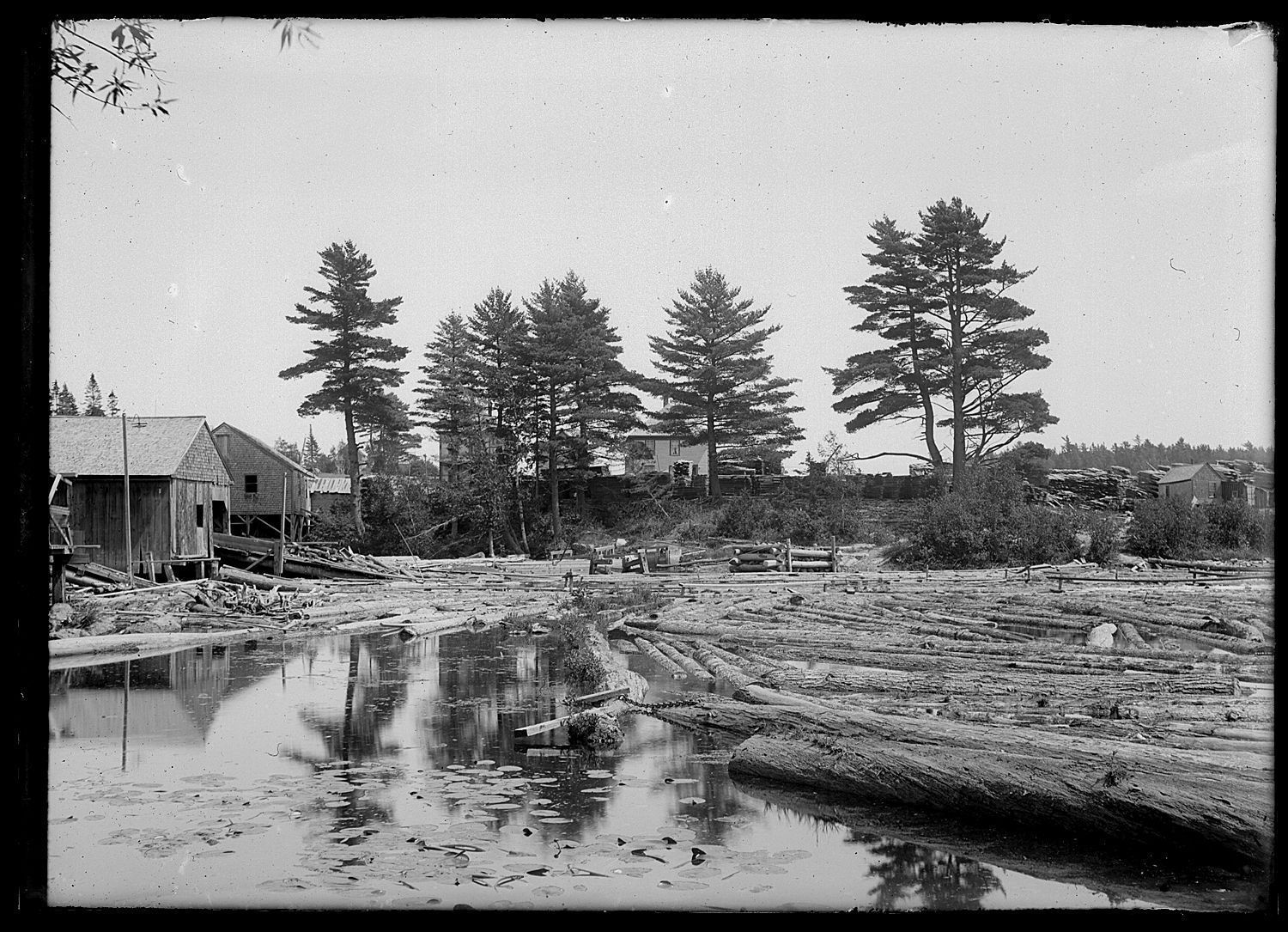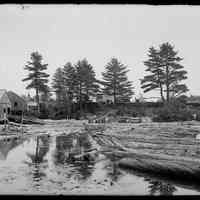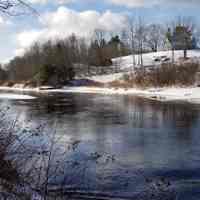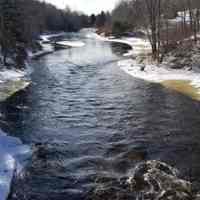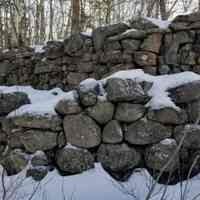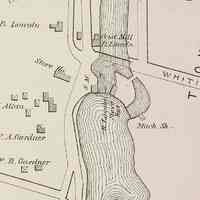Lincoln Mill Pond, Dennys River, Dennysville, Maine
Theodore Lincoln and a group of hardy men came to Township No. 2 in 1786 to harvest the timber and to use the waterpower to saw logs into boards. Bela and Christopher Dyer came at General Benjamin Lincoln's bidding to build a sawmill at the mill seat on the Dennys River in 1787, later moving to Township No. 5., now Calais, Maine. By 1791 over 400,000 feet of lumber were being sawed annually at the Lincoln's mills on the Dennys River. During 1803 and 1804, logs cut in the vicinity of Wilson's Stream were floated in rafts up the Dennys River as far as the grist mill, then hauled overland by ox teams to the millpond to be sawed into long lumber. laths and staves. As the supply of timber adjacent to the settlement was depleted, the woodsmen camped deep in the forest during the winter months to cut logs that were hauled by oxen to frozen streams to await the coming of spring. The rushing waters created by heavy rains and melting snow carried most of the logs downstream to mill ponds from whence they found their way during the summer to the hungry teeth of the saws which transformed them into lumber. In the fall, when the pond was empty of timber, the saw-logs which remained in pools or were caught above or under rapids during the spring drive were reclaimed to replenish the supply. Naturalist John James Audubon, who visited the settlement in 1832, described the steps that were taken to do so, in a dramatic essay entitled "The Force of the Waters." The massive stones in the Lincoln dam, carefully laid by Bela and Christopher Dyer in 1787, though hidden now by summer foliage, are still solidly in place on either bank, reaching out to the hole that was made when the dam was blown early on a Sunday morning in 1930, marking the end of the lumbering business that had sustained the communities along the Dennys River for nearly one hundred and fifty years.
Dennys River Historic PhotographsPhotos for Map
